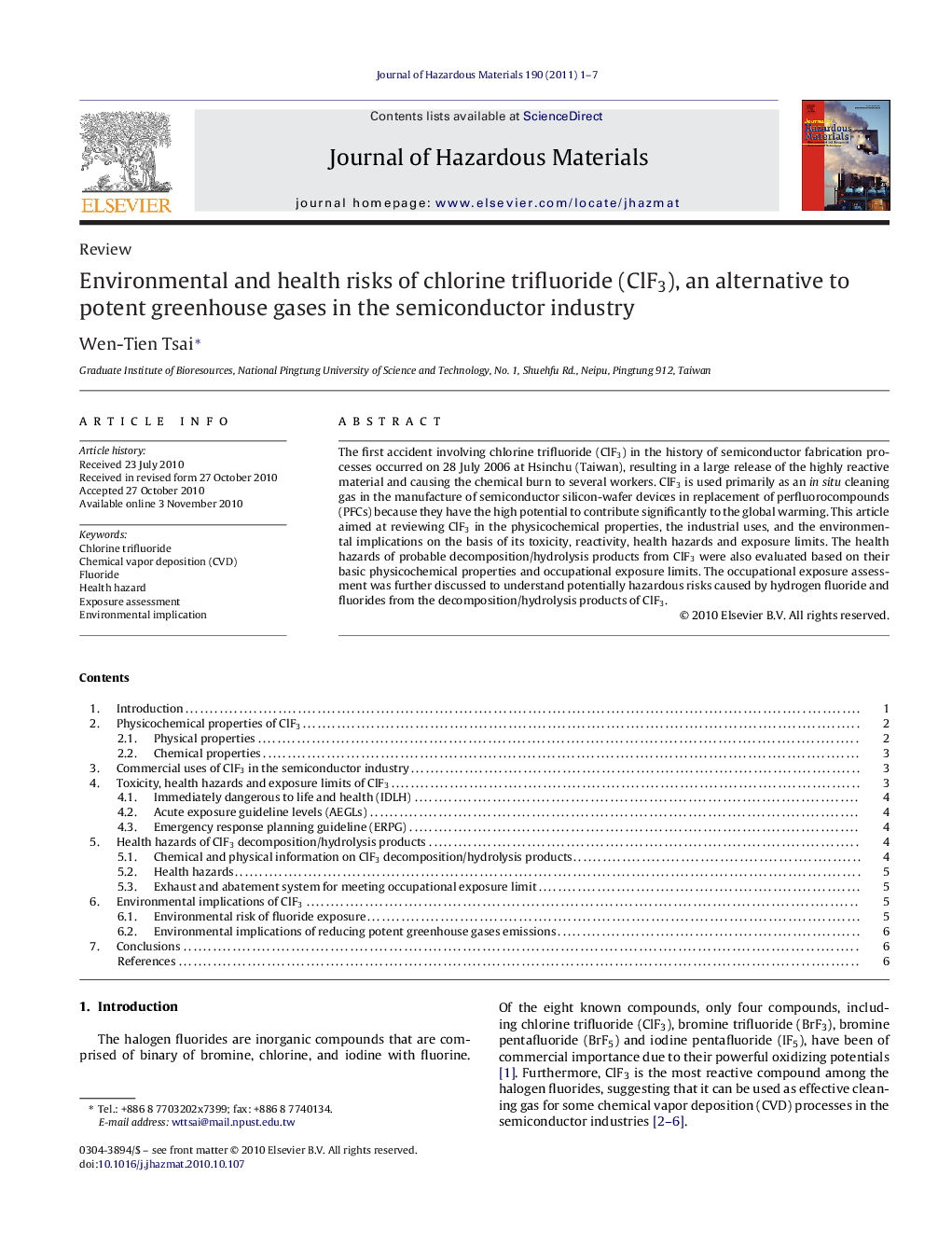| Article ID | Journal | Published Year | Pages | File Type |
|---|---|---|---|---|
| 578827 | Journal of Hazardous Materials | 2011 | 7 Pages |
Abstract
The first accident involving chlorine trifluoride (ClF3) in the history of semiconductor fabrication processes occurred on 28 July 2006 at Hsinchu (Taiwan), resulting in a large release of the highly reactive material and causing the chemical burn to several workers. ClF3 is used primarily as an in situ cleaning gas in the manufacture of semiconductor silicon-wafer devices in replacement of perfluorocompounds (PFCs) because they have the high potential to contribute significantly to the global warming. This article aimed at reviewing ClF3 in the physicochemical properties, the industrial uses, and the environmental implications on the basis of its toxicity, reactivity, health hazards and exposure limits. The health hazards of probable decomposition/hydrolysis products from ClF3 were also evaluated based on their basic physicochemical properties and occupational exposure limits. The occupational exposure assessment was further discussed to understand potentially hazardous risks caused by hydrogen fluoride and fluorides from the decomposition/hydrolysis products of ClF3.
Keywords
Related Topics
Physical Sciences and Engineering
Chemical Engineering
Chemical Health and Safety
Authors
Wen-Tien Tsai,
